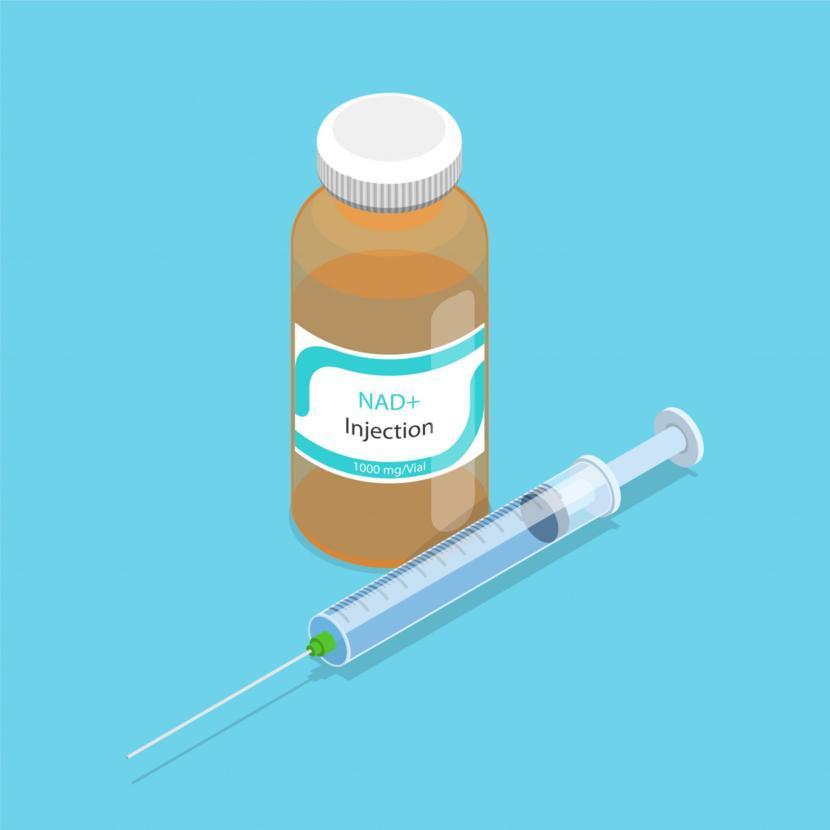Understanding NAD+ and Its Role in the Body

edi mulyana is a top Behavioral Analyst in garut, Jawa Barat. With a passion for the field and an unwavering commitment to their specialty, edi mulyana is an expert in changing the lives of their patients for the better. Through their designated cause and expertise in the field, edi mulyana is a prime example of a... more
What Is NAD+?
NAD+ (Nicotinamide Adenine Dinucleotide) is a vital coenzyme found in all living cells. It plays a central role in metabolic processes, particularly in energy production and cellular repair. As a key molecule in redox reactions, NAD+ helps transfer electrons during metabolic reactions, keeping the body’s energy engines running.
The Importance of NAD+ in Cellular Energy and Metabolism
NAD+ is essential for converting nutrients into ATP, the primary energy currency of cells. It is also a crucial cofactor for enzymes involved in metabolism. Without adequate NAD+ levels, cells struggle to maintain energy output, leading to systemic fatigue, impaired function, and accelerated aging.
NAD+ and DNA Repair, Mitochondrial Health, and Immune Regulation
- DNA Repair: NAD+ activates sirtuins and PARPs, enzymes responsible for maintaining genomic stability and repairing damaged DNA.
- Mitochondrial Function: NAD+ supports optimal mitochondrial performance, the powerhouse of the cell.
- Immune Function: Research suggests NAD+ modulates inflammatory responses and immune resilience, which often decline with age.
How NAD+ Levels Decline with Age
Key Mechanisms Behind NAD+ Depletion
NAD+ levels naturally decline with age due to increased consumption by enzymes like CD38, chronic inflammation, oxidative stress, and a reduced ability to synthesize NAD+ from precursors like tryptophan and NMN.
The Impact of NAD+ Decline on Cellular Function
As NAD+ drops, so does mitochondrial function, cellular repair, and overall resilience. This decline is often linked to reduced physical and mental performance, slower recovery, and heightened susceptibility to disease.
Function |
With Optimal NAD+ |
With Low NAD+ |
|---|---|---|
Energy Production |
Efficient ATP synthesis |
Fatigue, low stamina |
DNA Repair |
Stable genome |
Increased mutations |
Immune Response |
Balanced inflammation |
Chronic inflammation, weakened immunity |
Early Signs of NAD+ Deficiency
- Persistent fatigue or low energy levels
- Cognitive decline or brain fog
- Slower recovery from physical exertion
- Signs of premature aging (e.g., joint stiffness, skin changes)
The Link Between NAD+ Decline and Age-Related Diseases
Neurological Decline and Cognitive Disorders
Reduced NAD+ impairs mitochondrial health in brain cells, contributing to neurodegeneration. Studies have linked low NAD+ levels to increased risk for conditions like Alzheimer’s and Parkinson’s disease due to impaired cellular repair and increased oxidative stress.
Metabolic Dysfunction and Insulin Resistance
Low NAD+ levels are associated with impaired glucose metabolism and insulin sensitivity. This can lead to conditions like type 2 diabetes, obesity, and metabolic syndrome, particularly in aging populations.
Cardiovascular and Mitochondrial Impairment
The heart is heavily reliant on NAD+-driven mitochondrial function. NAD+ deficiency has been linked to arterial stiffness, endothelial dysfunction, and overall cardiovascular decline—key drivers of age-related morbidity.
Current Research on NAD+ Restoration Strategies
Lifestyle Interventions (Exercise, Caloric Restriction)
Exercise and caloric restriction remain two of the most well-documented natural methods for preserving and restoring NAD+ levels. Both activities activate sirtuins—NAD+-dependent proteins that support mitochondrial health and DNA repair.
- Exercise: Regular aerobic and resistance training stimulate NAD+ biosynthesis and mitochondrial biogenesis.
- Caloric Restriction: Reducing calorie intake without malnutrition promotes longevity pathways linked to elevated NAD+ activity.
NAD+ Precursors: NMN, NR, and Others
Supplementing with NAD+ precursors like NMN (Nicotinamide Mononucleotide) and NR (Nicotinamide Riboside) is an increasingly popular strategy. These molecules serve as raw materials for your body to produce NAD+ naturally and efficiently.
Quick Comparison:
- NMN: Direct precursor, highly bioavailable, used in many human trials.
- NR: Slightly earlier precursor, with more published clinical research to date.
- Other options: Niacinamide and Tryptophan offer alternative, but less efficient, NAD+ synthesis routes.
To learn more about the synergistic role of NMN and NR check out an in-depth breakdown here.
What Human Studies Are Telling Us
Human trials are beginning to support the use of NAD+ precursors for age-related metabolic and cognitive health. For example, a 2020 placebo-controlled trial found that NR supplementation improved blood NAD+ levels and markers of cardiovascular function in older adults.
Clinical Implications and Considerations for Practitioners
Who Might Benefit from NAD+ Support?
Patients experiencing early signs of fatigue, cognitive decline, or metabolic slowdown may benefit from NAD+ support. This is particularly true for individuals over 40, or those recovering from illness, stress, or long-term inflammation.
Supplementation Safety and Dosage
Most NAD+ precursors like NMN and NR have shown strong safety profiles in clinical trials, with dosages typically ranging from 250mg to 500mg daily. Side effects are rare but may include mild nausea or flushing. Always tailor dosing to the individual’s health profile and goals.
- NR Dosage: 300–500mg/day
- NMN Dosage: 250–500mg/day
- Stacking: Often combined with Resveratrol or TMG for synergistic effect
Always tailor dosing to the individual’s health profile and goals. For a full range of clinically aligned longevity formulas, visit Eternum Labs — Australia’s leading anti-aging supplement provider.
How to Evaluate NAD+ Status (Emerging Tools & Biomarkers)
Direct testing of NAD+ in blood is limited but improving. Emerging biomarkers include NAD+/NADH ratios, mitochondrial function assessments, and inflammatory markers like CRP. Saliva and blood-spot testing technologies are being explored for future diagnostics.
Final Thoughts: The Future of Cellular Health and Aging
Personalized Longevity Protocols
As NAD+ science advances, the future of anti-aging will likely be personalized. Factors such as genetics, environment, and individual NAD+ metabolism will influence how patients respond to interventions. The next decade will focus on customizing longevity stacks based on biomarker data and clinical insights.
Where the Research Is Headed Next
Current studies are expanding into NAD+’s role in neurodegeneration, immune resilience, and mitochondrial gene expression. New delivery systems (like liposomal NMN or sublingual NR) are also being explored to improve bioavailability and targeting.
Key Takeaway: NAD+ restoration may soon become a standard pillar in age-related care, offering a proactive strategy for extending both lifespan and healthspan.








